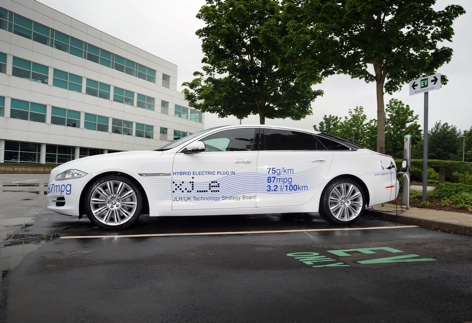The Low Carbon Vehicles show held at Millbrook in Bedfordshire at the end of the summer is a great opportunity to see innovation in action. I’ve attended these events since their inception five years ago. Being able to look at prototypes on the Technology Strategy Board stand one year and then, just 12 months later, drive a car incorporating those advances, demonstrates clearly the rate at which the automotive sector is working towards a sustainable future. The LCV show captures the very essence of what we mean by the journey from ‘concept to commercialisation’.
The automotive sector remains a vibrant and vital part of the UK economy, and so the industrial strategy unveiled by government and industry on 12 July has been a big talking point. As a member of the Automotive Council, I’ve seen just how much work has gone into identifying the priorities and the resources needed to maintain our position among the leading developers and producers of vehicles in the world. It’s not for nothing that most of the world’s leading Formula One teams are based here!

Included in the strategy is £1 billion earmarked for the creation of an Advanced Propulsion Centre (APC). Although the details of how exactly it will function have yet to be finalised, it will share some of the characteristics found in the Catapults which the Technology Strategy Board has been setting up over the last few years. It will be focussed on scaling up innovative ideas that are ready to be tested at a commercial scale prior to market entry. The Centre will help develop the systems and supply chains needed to manufacture the next generation of low carbon vehicles here in the UK.
To support that initiative, the Technology Strategy Board announced a new £10 million competition on the same day. The successful entries will be collaborative R&D proposals to develop products and systems that are ready to take the next step towards industrialisation. As such, they are designed to be strong candidates for adoption by the APC.
The competition, Building an Automotive Supply Chain of the Future, is the tenth in our Integrated Delivery Programme (IDP). The programme aims to integrate the low carbon vehicle innovation chain, from the science base, through collaborative R&D to demonstration.
It is the supply chain that allows everyone, from the smallest suppliers to the biggest OEMs, to play a part in our automotive success. The key word here is ‘integrated’ – it involves not just the industry but all parts of the innovation process. This country has a huge amount of ideas being developed in our universities and colleges, as well as businesses of all sizes.
“Growth through innovation is what the Technology Strategy Board was set up to encourage and enable
Innovation feeds on innovation: someone finds a way to improve on a process and then someone else uses that to change and develop another, related area of technology. That integration goes further; the Engineering and Physical Sciences Research Council (EPSRC), the Departments of Business, Innovation & Skills (BIS) and Transport (DfT) as well as the specialist Office of Low Carbon Vehicles (OLEV) are all closely involved in the process. Only by bringing research, business and government together to drive innovation forward can we get the best result for the UK.
And it is really gratifying to see how businesses can grow through this kind of support. Just last week, I was talking with Mark Roberts of Ashwoods Automotive, a small firm that has worked to develop technologies for hybrid vehicles. In just a few years, they have gone from being purely a components supplier to being the country’s leading supplier of hybrid commercial vehicles, supplying businesses as diverse as BT, Royal Mail and the Environment Agency.
Battery manufacturer Axeon has experienced success too through its involvement with the Technology Strategy Board. It was involved in the development of the Jaguar XJ_e and proved itself such a vital part of the future supply chain that Johnson Matthey decided to invest in the business and integrate it into their own organisation.
Xtrac Ltd designed, developed, manufactured, tested and refined the transmission system. It provided an opportunity for Xtrac to develop a dedicated EV gearbox that is suitable for multiple vehicle applications with little or no modification.
This kind of growth through innovation is what the Technology Strategy Board was set up to encourage and enable. These examples (and there are many others) show just what is possible when imagination and opportunity come together.
And that is good for UK plc. Like all major industries, the automotive sector in the UK is looking for ways to stay at the forefront of this huge global market, which is dominated by international companies. By demonstrating to manufacturers that they can access some of the most innovative ideas in this worldwide industry right here, we can grow our automotive sector and attract more investment from overseas.




Red Bull makes hydrogen fuel cell play with AVL
Formula 1 is an anachronistic anomaly where its only cutting edge is in engine development. The rules prohibit any real innovation and there would be...